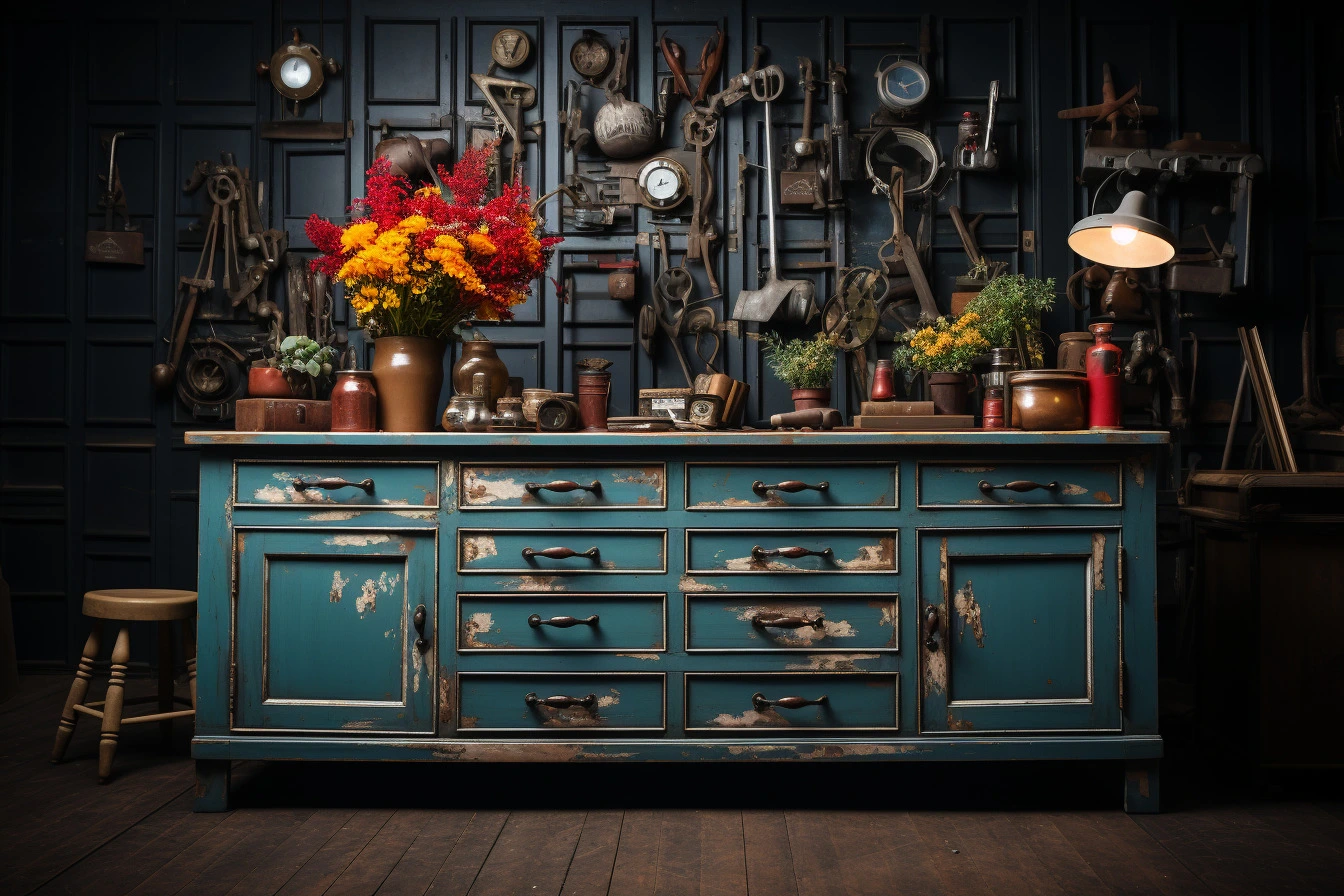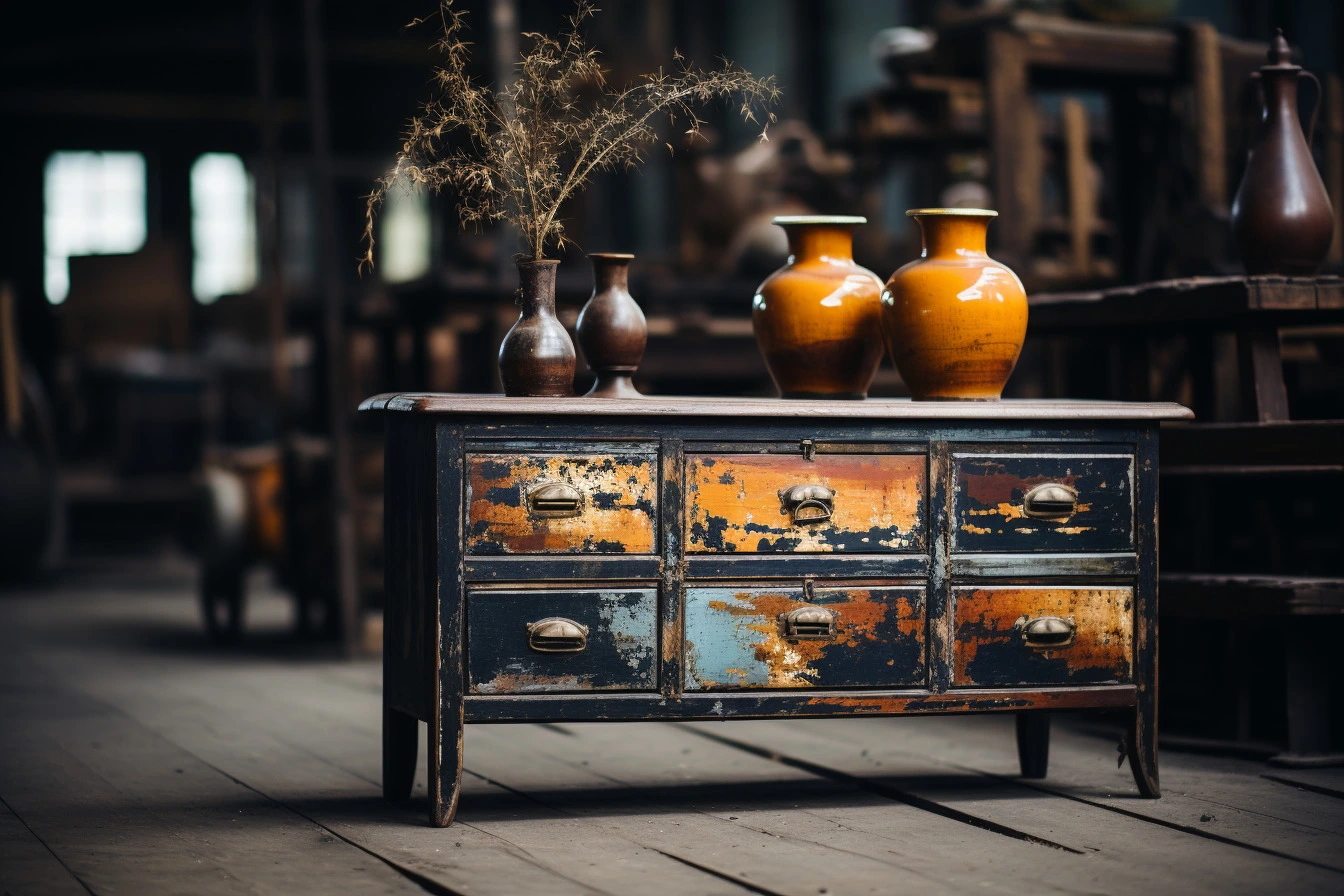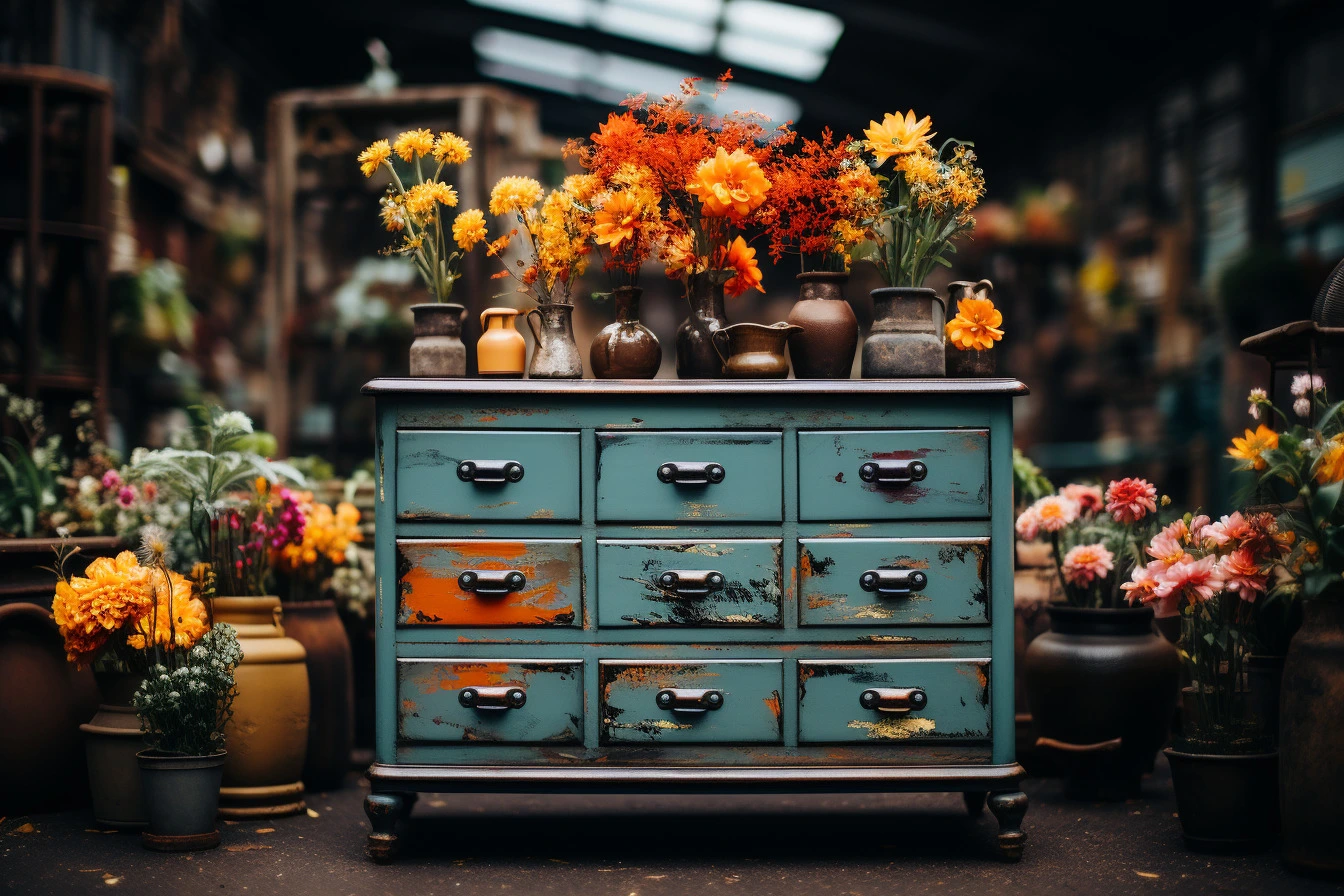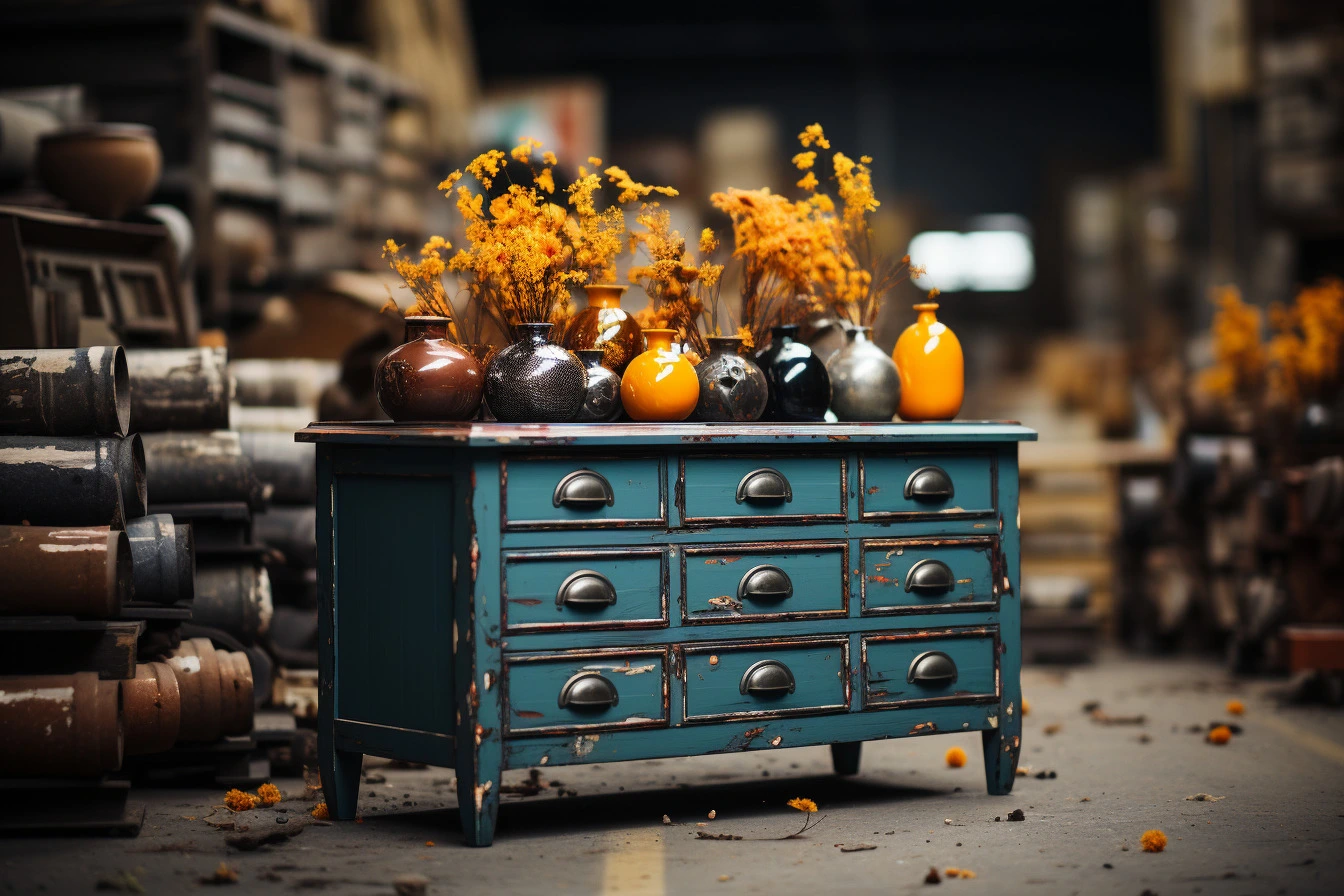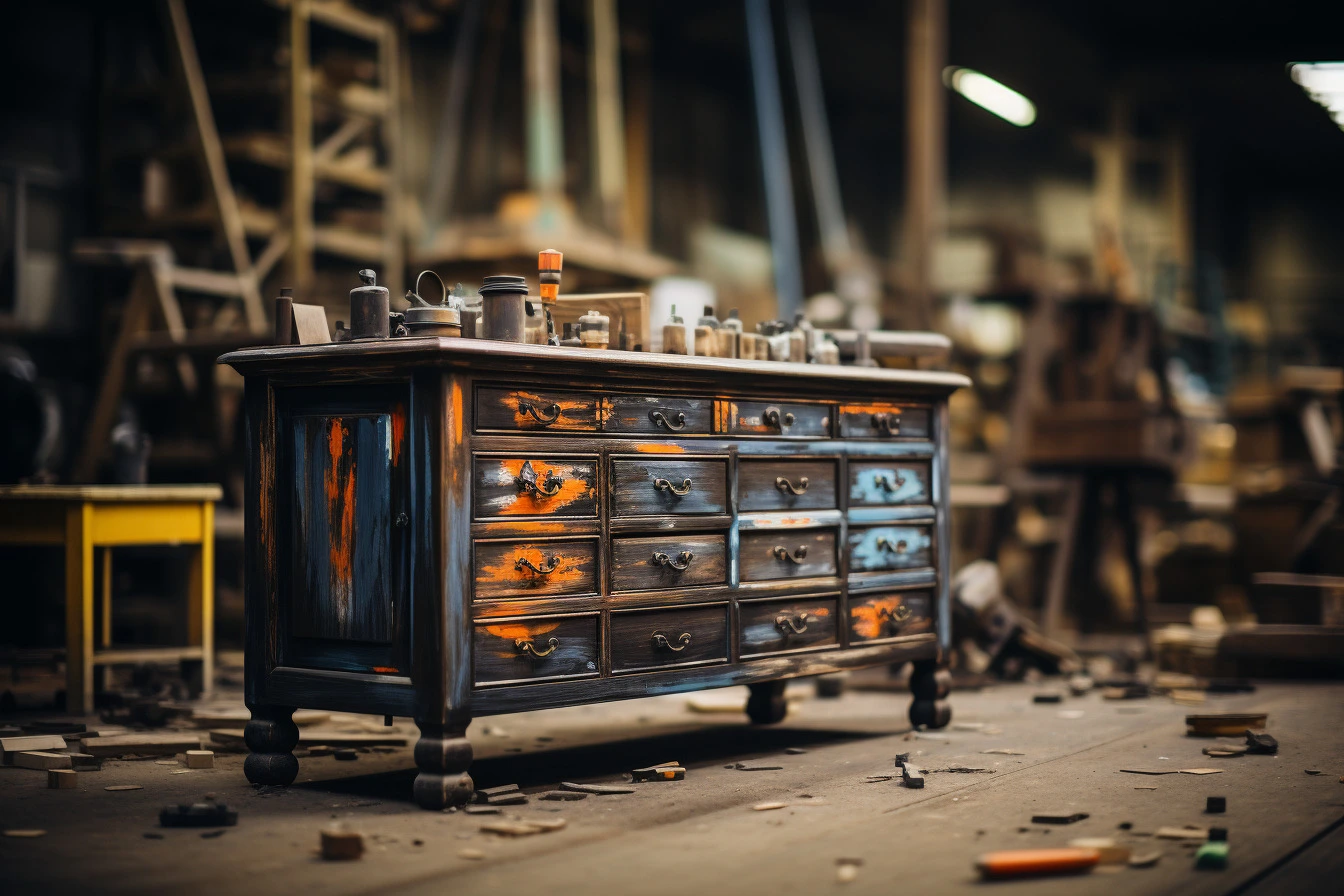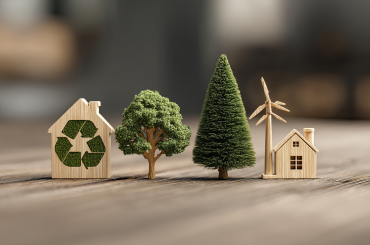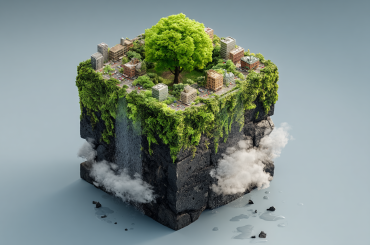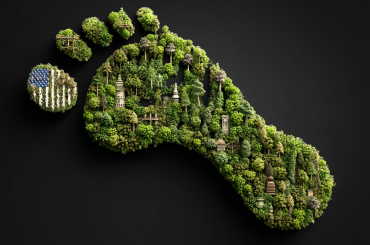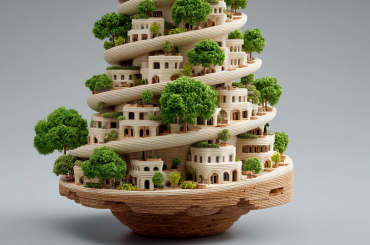I’ll admit it—I used to be absolutely terrible at DIY projects. The kind of person who’d look at Pinterest tutorials and think “how hard can it be?” before promptly destroying whatever I was attempting to fix. My poor flatmate Ruth still brings up the Great Bookshelf Incident of 2019, when I tried to “jazz up” our IKEA Billy with some paint and somehow ended up with what looked like a crime scene involving rainbow vomit.
But then I discovered the world of creative upcycled furniture, and everything changed. Not because I suddenly became skilled with power tools (I absolutely did not), but because upcycling taught me that perfection isn’t the point—transformation is.
My first real success with upcycling old furniture ideas came from desperation rather than inspiration. I’d found this gorgeous Victorian chest of drawers at a car boot sale for £15, but it was in properly rough condition. The previous owners had painted it with what I can only describe as “aggressive beige,” and one of the drawer fronts was coming loose. My budget couldn’t stretch to professional restoration, and honestly, I liked the challenge of bringing it back to life myself.
What started as a practical solution to my lack of furniture budget became an obsession with discovering creative upcycled furniture possibilities in the most unlikely places. That chest, after weeks of gentle restoration (and several YouTube tutorial marathons), became the centerpiece of my bedroom. Every time I look at it, I remember the satisfaction of revealing the beautiful wood grain hidden under layers of unfortunate paint choices.
The environmental benefits of upcycling old furniture ideas weren’t immediately obvious to me, but they became impossible to ignore once I started calculating the impact. That Victorian chest I rescued? It was destined for a skip. The amount of embodied energy, resources, and craftsmanship that would have been wasted was staggering. Instead of contributing to the 22 million pieces of furniture that end up in UK landfills annually, I’d given something beautiful a second life.
Finding pieces for creative upcycled furniture projects became like treasure hunting with a purpose. Charity shops, estate sales, online marketplaces, even neighborhood Facebook groups where people were giving away furniture they couldn’t be bothered to move—everywhere I looked, I saw potential. The key was learning to see past surface damage to the good bones underneath.
My friend Sasha, who runs a small interior design business, taught me the fundamentals of spotting worthwhile upcycling old furniture ideas. “Look for solid wood construction,” she’d say, running her hands along joints and checking for wobbles. “Veneer can be tricky to work with, and particle board isn’t worth your time. But a well-made piece with good proportions? That’s worth rescuing, even if it looks terrible right now.”
The tools and materials needed for creative upcycled furniture don’t have to break the bank, though I definitely made some expensive mistakes early on. You don’t need a fully equipped workshop to get started—I’ve done most of my projects with basic hand tools, sandpaper, brushes, and whatever space I could clear in my tiny flat. The key is starting small and building your toolkit gradually as you tackle more ambitious projects.
Safety became a priority after my first attempt at paint stripping went rather wrong. I’d bought the cheapest chemical stripper I could find, used it in my poorly ventilated bathroom, and spent the next day feeling like I’d been hit by a truck. Now I always work outdoors when possible, invest in proper ventilation and protective equipment, and choose the least toxic products available. My lungs and the environment both appreciate the extra consideration.
The most rewarding aspect of upcycling old furniture ideas is the creative problem-solving involved. Take the dining table I found on Gumtree—the seller described it as “vintage” but failed to mention that two of the legs were held on with duct tape and a prayer. Most people would have walked away, but I saw an opportunity to get creative with both structural repair and aesthetic enhancement.
Rather than trying to hide the repairs, I decided to celebrate them. I replaced the wonky legs with hairpin legs from a local metalworker, giving the traditional wooden top a modern industrial base. The contrast between old and new, wood and metal, created something much more interesting than either element would have been alone. That table has hosted countless dinner parties, and guests always ask about its story.
Storage solutions represent some of my most successful creative upcycled furniture projects. Old wardrobes can become pantry storage with the addition of shelving and wire baskets. Vintage suitcases stack beautifully to create unique bedside tables with built-in storage. I once transformed a dated entertainment center into a craft organizer by removing the dated wood grain contact paper, painting it bright white, and adding colorful fabric-lined drawers.
The technical skills involved in upcycling old furniture ideas develop naturally through practice, but there are some fundamental techniques worth mastering early. Proper sanding is crucial—rushing this step always shows in the final result. I learned this the hard way when I tried to paint over a poorly prepared surface and ended up with a finish that looked like orange peel. Now I take my time with progressively finer grits, and the difference in the final result is dramatic.
Paint selection makes an enormous difference in both the appearance and environmental impact of creative upcycled furniture. I’ve become a devoted fan of chalk paint for its forgiving application and matte finish, though it does require wax or polyurethane protection for high-use pieces. For environmental reasons, I try to choose low-VOC or natural paints whenever possible. The fumes are less overwhelming, and I feel better about not releasing unnecessary chemicals into my home.
Hardware replacement can completely transform the character of a piece. I’ve collected vintage handles, knobs, and pulls from antique shops and architectural salvage yards, creating a small treasure trove of options for different projects. Sometimes the right hardware costs more than the furniture itself, but the transformation is so dramatic that it’s worth the investment.
Color choice in upcycling old furniture ideas often reflects personal style, but I’ve learned to consider the piece’s intended function and placement too. That bright turquoise I loved in the shop looked garish in my bedroom, teaching me to live with samples for a few days before committing to a full paint job. Neutral colors are more versatile, but sometimes a bold choice can turn a basic piece into a stunning focal point.
The learning curve for creative upcycled furniture can be steep, and I’ve definitely had my share of failures. There was the chair I destroyed trying to remove old varnish (RIP, poor chair), the table I painted three different colors before admitting defeat, and the bookshelf that collapsed spectacularly because I didn’t understand how much weight the shelves needed to support. Each failure taught me something valuable about materials, techniques, or my own limitations.
Sustainable sourcing becomes easier once you develop an eye for quality pieces worth saving. I’ve learned to recognize the difference between solid wood and veneer, to spot quality joinery techniques, and to assess whether damage is cosmetic or structural. Local salvage operations often have incredible pieces that just need some attention, and the prices are usually much more reasonable than antique shops.
The social aspects of upcycling old furniture ideas have been an unexpected bonus. I’ve connected with other DIY enthusiasts through social media, sharing progress photos and getting advice on tricky techniques. Local furniture restoration groups often share tools, materials, and expertise. There’s something wonderfully community-minded about people helping each other rescue and restore beautiful old pieces.
Teaching friends and family about creative upcycled furniture has become one of my favorite ways to spend weekends. My sister Emma was initially skeptical (“You want to sand what for how many hours?”), but after helping me restore a mid-century dresser, she caught the bug. Now she sends me photos of potential projects at least twice a week, asking whether various beaten-up pieces have potential.
The environmental impact of embracing upcycling old furniture ideas extends far beyond keeping pieces out of landfills. The furniture industry has a massive carbon footprint, from harvesting materials to manufacturing to transportation. When we rescue and restore existing pieces, we’re opting out of that entire cycle of resource consumption. Plus, older furniture is often made from better quality materials than much of what’s available new today.
Quality assessment becomes crucial when evaluating potential projects for creative upcycled furniture. I’ve learned to check drawer construction (dovetail joints are a good sign), test for structural soundness, and evaluate whether any damage is beyond my skill level to repair. Sometimes the most appealing piece aesthetically isn’t worth the time and effort required to make it functional.
Seasonal considerations affect both the availability of pieces and the practicality of working on them. Spring cleaning season brings a flood of furniture to charity shops and online marketplaces. Summer weather makes outdoor sanding and finishing much more pleasant. Winter projects need to account for longer drying times and limited ventilation options.
The economics of upcycling old furniture ideas can be surprisingly favorable when you factor in both the money saved and the value created. That £15 Victorian chest I mentioned? After about £30 in materials and supplies, I had a piece that would have cost £300-400 new, assuming you could even find something of comparable quality. The time investment was significant, but spread over several pleasant evenings, it felt more like relaxing hobby time than work.
Professional techniques adapted for amateur use have improved my results dramatically. Learning about proper brush techniques from watching furniture restoration videos, understanding how different finishes interact, discovering the right tools for specific jobs—these skills transfer from project to project, making each one easier and more successful than the last.
The satisfaction derived from creative upcycled furniture projects goes far beyond the practical benefits. There’s something deeply fulfilling about taking something discarded and making it beautiful and functional again. It’s a form of creative problem-solving that engages both hands and mind, providing a welcome break from screen-based work and digital overwhelm.
Storage and workspace organization becomes increasingly important as you tackle more ambitious upcycling old furniture ideas. I’ve learned to set up dedicated areas for different stages of projects—stripping and sanding outdoors when possible, painting in a well-ventilated garage space, and final assembly in a clean indoor area. Proper organization prevents accidents and makes the work more enjoyable.
Modern twists on traditional techniques keep creative upcycled furniture projects interesting and relevant. Combining vintage pieces with contemporary hardware, using unexpected color combinations, or adding modern functionality to classic forms—these approaches create pieces that feel both timeless and current.
The therapeutic aspects of furniture restoration weren’t something I expected when I started, but they’ve become one of my favorite benefits. The methodical nature of sanding, the meditative quality of applying finish coats, the immediate visible progress—working with my hands on creative upcycled furniture provides a perfect counterbalance to the abstract, digital nature of much modern work.
Learning from mistakes has been as valuable as any tutorial or guide in developing my upcycling old furniture ideas. Each project teaches something new about materials, techniques, or design principles. The key is approaching failures as learning opportunities rather than disasters, and being willing to adapt plans when reality doesn’t match expectations.
The future possibilities for creative upcycled furniture seem limitless as I continue developing skills and confidence. Each successful project builds toward the next, more ambitious one. The Victorian chest led to a dining table, which led to a complete bedroom set, which led to helping friends with their own projects. What started as a budget necessity has become a genuine passion for sustainable living practices that enriches my home and my life in ways I never expected.
